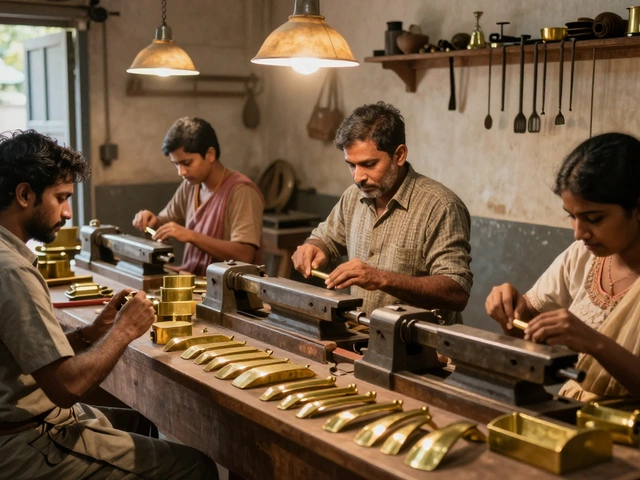Factory Incentives – What They Are and How They Help Your Business
If you run a factory or plan to start one, you’ve probably heard about “factory incentives” but aren’t sure what they actually mean. In simple terms, they are financial perks that the government gives to manufacturers to lower their expenses and encourage investment. Think of them as discounts, cash backs, or low‑interest loans aimed at making your production line cheaper and faster.
Why do these incentives exist? India wants more jobs, more exports, and more tech‑driven factories. By handing out tax breaks or capital subsidies, the government nudges entrepreneurs to set up plants in areas that need jobs or to adopt modern equipment. For you, that means less money out‑of‑pocket and a better chance to compete with bigger players.
Big‑Ticket Incentives You Can Claim Right Now
1. Capital Subsidy – Most states offer up to 25% of the cost of new machinery as a grant. If you buy a CNC machine worth ₹10 lakh, you could get ₹2.5 lakh back. The subsidy usually comes with a usage clause (you must run the machine for at least three years).
2. Interest Subvention – When you take a loan for plant expansion, the government may cover part of the interest rate, sometimes as low as 2% per annum. This reduces the overall cost of borrowing dramatically.
3. Tax Holiday – New factories in Special Economic Zones (SEZ) or under the “Make in India” scheme can enjoy a full exemption from income tax for the first five years. After that, the tax rate drops to a lower slab.
4. GST Compensation – Some states reimburse a portion of GST paid on raw materials for a set period. This helps cash flow during the early production months.
5. Power & Water Concessions – Utility boards may give you electricity at a lower tariff or provide water at subsidised rates if you set up in a designated industrial corridor.
How to Apply – A Practical Step‑by‑Step Guide
Step 1: Identify the Right Scheme – Check the central Ministry of MSME website and your state’s industrial department. They list the latest incentive packages and eligibility criteria. For instance, Karnataka’s “Industrial Promotion Programme” focuses on tech‑based factories, while Uttar Pradesh offers higher capital subsidies for agro‑processing units.
Step 2: Gather Required Documents – You’ll typically need a detailed project report, land ownership proof, GST registration, and a bank guarantee. Having a clear cost breakdown makes the approval faster.
Step 3: Submit an Application – Most states now have online portals. Fill the form, upload PDFs, and pay a nominal processing fee. Keep a copy of the acknowledgment number – you’ll need it for follow‑up.
Step 4: Follow Up & Inspection – After submission, officials may visit your site to verify the land and the planned equipment. Be ready with the machinery catalogue and a timeline for commissioning.
Step 5: Receive Funds & Start Production – Once approved, the subsidy or interest relief is credited directly to your bank account. Use the funds to purchase machines, hire staff, or cover operating costs.
Remember, each incentive has a “use‑it‑or‑lose‑it” rule. If you don’t meet the production target within the stipulated time, you may have to repay the grant. So plan your output realistically.
Bottom line: Factory incentives can shave off a big chunk of your startup cost and boost cash flow during the critical early months. By matching the right scheme with your business type, you can turn a pricey investment into a manageable one. Start by checking the latest state‑specific offers, compile a solid project report, and file the application online. The sooner you claim, the faster you’ll see savings roll in.
Top Affordable Locations for Setting Up Factories with Government Incentives
Exploring the best and most economical places for factory setups can unveil opportunities where manufacturing costs are minimized due to favorable government schemes. Various regions stand out due to their lower labor costs, better infrastructure, and government incentives. This article delves into the economic landscape, highlighting regions that offer manufacturers optimal conditions for operations. It also examines how these locations can influence the broader manufacturing strategy and business scalability.
Read More




